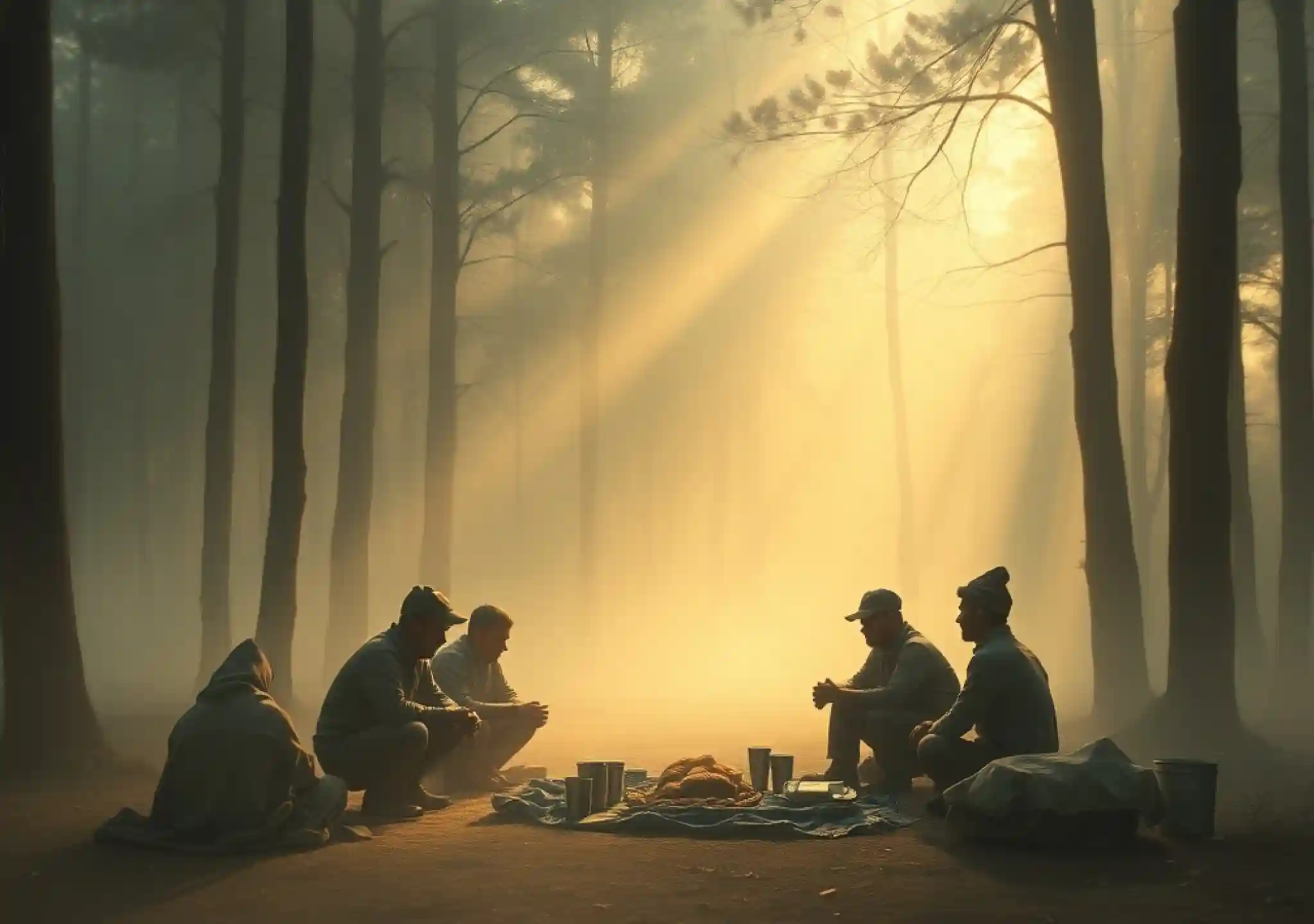A Breakfast Hidden from Time
“…I have attended a dozen of these clandestine breakfasts,” Vallejo recalls. “There were no photographs, of course. If we had been caught with a camera, we would have ended up in prison—or worse.”
Through the Synthetic Memories project, Vallejo was able to recreate this pivotal but undocumented moment. The AI-generated image showed a small group of workers around a makeshift picnic setup in a clearing, their faces obscured, the backdrop a misty forest bathed in early morning light.
Though artificial, the image resonated deeply.
“It felt real enough to stir something in me,” he said. “Seeing it reminded me of the fear—but also the determination and hope we carried with us.”
Synthetic Memories: Preserving What Was Never Captured
Projects like Synthetic Memories raise important questions about how we define memory and history. Traditionally, collective memory has depended on physical evidence—photographs, recordings, official documents.
But for communities silenced by repression, migration, or marginalization, such records are often missing.
AI, when used thoughtfully, can help reconstruct these lost or never-recorded moments—not as literal truths, but as emotional approximations that validate the lived experience of individuals and communities.
Reclaiming History Without Rewriting It
The result is not about rewriting history, Garcia insists, but reclaiming agency over it.
“It’s not about saying this happened exactly like this, but rather: something happened. It mattered. It shaped me. And now it can be shared.”
This nuanced approach contrasts with growing concerns about AI’s ability to distort truth or produce misinformation.
By intentionally blurring the line between fact and impression—depicting figures from behind, rendering images slightly imperfect—the project encourages reflection rather than deception.
Healing Through Remembering
For refugees, elders with dementia, survivors of state violence, or those whose stories were erased from dominant narratives, this use of generative AI offers something profound:
validation, visibility, and healing.
As Vallejo puts it:
“They tried to make us forget. This technology is helping us remember.”
Giving Roots to the Rootless
And for people like the Syrian grandmother Garcia met in Athens—who feared her grandchildren would grow up without roots—it offers a lifeline across time.
“They might never see Syria,” Garcia says. “But they can see the living room where their grandmother celebrated Eid. The train their great-grandmother feared in 1925. The secret forest meeting that helped bring democracy back.”
These aren’t just images. They’re synthetic bridges—linking fractured pasts to uncertain futures with imagination, memory, and dignity.
Conclusion: When Memory Meets Machine
Synthetic memories may not be literal, but they are deeply real. They allow us to honor the unrecorded, make space for the unspoken, and carry forward the emotions and truths that history may have overlooked.
In an age where machines can help us see the invisible, we are not just using AI to remember the past—we are using it to reconnect with it.

